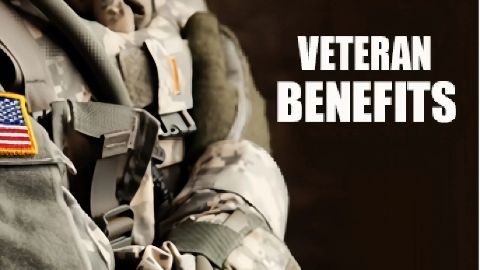
Veteran Resilience Benefits: Beyond Traditional Support Frameworks
Contemporary veteran welfare systems face multidimensional challenges in transitioning service members to civilian life. Evidence suggests holistic approaches significantly improve long-term veteran outcomes beyond conventional compensation models.

Veteran welfare represents a critical societal obligation, yet traditional systems often operate reactively rather than proactively. As military roles diversify and service-related stressors evolve, welfare paradigms must shift from standardized entitlements to adaptive resilience-building. This paper analyzes persistent systemic friction points and identifies innovative pathways for sustainable veteran well-being, and examines structural gaps in healthcare accessibility, employment sustainability, and bureaucratic navigation, proposing an integrated "Resilience-Oriented Benefits Framework" emphasizing personalized support, technological integration, and community partnerships.
Historical Context & Current Challenges
Post-conflict veteran support historically prioritized disability compensation and pensions. Modern conflicts, however, generate complex needs:
-
Fragmented Healthcare: Disjointed transitions between Department of Defense (DoD) and Veterans Affairs (VA) systems cause treatment delays, especially for mental health (PTSD, depression) and chronic conditions.
-
Employment Mismatch: Skill translation barriers persist. While unemployment rates for post-9/11 veterans have improved (BLS, 2023), underemployment and rapid job turnover remain high, indicating poor vocational alignment.
-
Administrative Complexity: Overlapping federal/state programs and intricate eligibility criteria create navigational burdens, deterring utilization of entitled benefits like education grants (e.g., GI Bill) and housing assistance.
The Resilience-Oriented Framework
Addressing these requires systemic innovation:
-
Personalized Transition Planning (PTP): Mandatory, individualized plans initiated 12 months pre-separation, integrating medical records, skills assessment, career counseling, and family support coordination. Example: Pilot programs in Denmark show 22% higher retention in first civilian jobs.
-
Tech-Enabled Navigation: Centralized AI-driven platforms (e.g., blockchain-secured records) streamlining benefit applications across agencies, reducing processing times and claimant frustration.
-
Community-Integrated Care: Formalizing partnerships with civilian healthcare networks and local NGOs for localized mental health support, peer mentoring, and emergency aid, supplementing federal resources.
-
"Service-to-Civic" Skill Bridges: Collaborations with industries (tech, infrastructure, logistics) creating veteran-targeted credentialing programs recognizing military-acquired competencies (leadership, crisis management).
Case Evidence
Ireland's "One-Stop-Shop" veteran centers integrating health, finance, and employment services reduced benefit processing time by 60%.
Virginia's "Veteran SkillBridge" initiative with private sector partners decreased veteran underemployment by 18% within two years.
Conclusion
Veteran welfare efficacy hinges on transcending reactive compensation. A Resilience-Oriented Framework—prioritizing seamless transitions, technological agility, and community synergy—offers a sustainable model. Investing in veterans' adaptive capacity yields not only individual well-being but broader societal and economic dividends. Future research should quantify long-term cost-benefit ratios of such integrated systems.
You May Like
Military Civilian Careers: Explore Your Potential
Military civilian careers represent a dynamic intersection of defense strategy and civilian expertise, offering career opportunities that bridge national security objectives with public service. These roles span diverse sectors are critical to supporting military operations while fostering technological innovation.
Where White Coats Meet Camouflage—A Dual Mission of Mercy and Military Readiness
"Military nurses embody a unique duality: warriors of healing in war zones, guardians of public health in peace."
Military Benefits for College: Your Path to an Affordable Degree
Serving in the U.S. military opens doors to significant financial support for higher education, easing the burden of college costs for service members, veterans, and their families.
How Canada Nurtures Its Guardians Beyond the Battlefield
Canada's military benefits framework stands as a testament to the nation’s commitment to safeguarding the well-being of its military personnel, their families, and veterans. This system emphasizes holistic support, addressing physical, psychological, educational, and social needs.
10 Little-Known U.S. Veteran Benefits You Should Claim
While TRICARE and the GI Bill® are cornerstones of veteran support and military benefits, the U.S. Department of Veterans Affairs (VA) offers a wealth of underutilized benefits that can dramatically improve quality of life, ease financial strain, and unlock new opportunities.